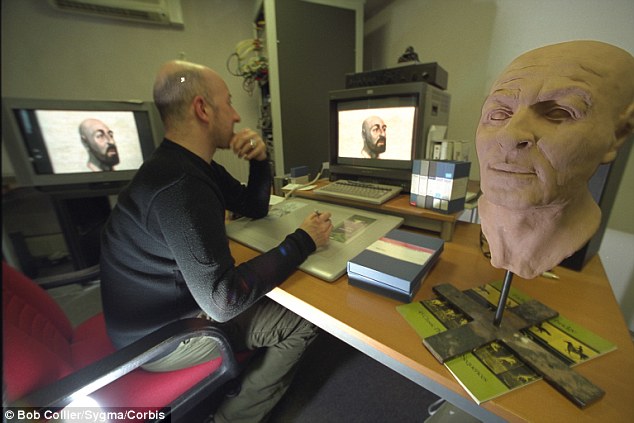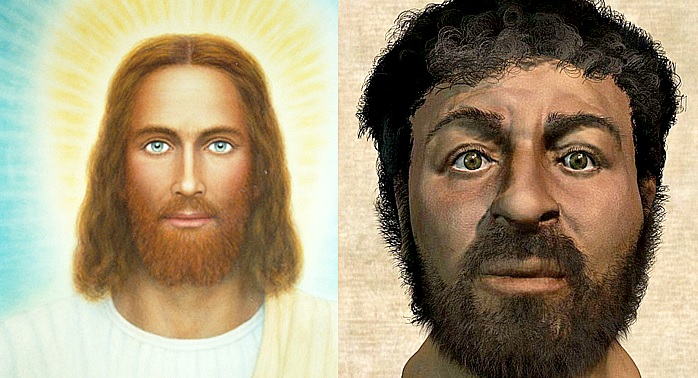He may be shown as a Caucasian man with long, flowing light brown hair in many religious artworks, but Jesus would have likely had a darker complexion and short, dark, curly hair, a forensic expert claims.
Retired medical artist Richard Neave has recreated the face of ‘Jesus’ by studying Semite skulls using modern-day forensic techniques.
His portrait shows the Son of God may have had a wide face, dark eyes, a bushy beard and short curly hair, as well as a tanned complexion.

Dr Neave (pictured) and his team X-rayed three Semite skulls from the time, previously found by Israeli archaeologists. They used computer technology to work out how the muscles and skin should look, upon which they based a 3D model (seen on the computer screen) and a clay bust of Christ (right)
These features would likely have been typical of Middle Eastern Jews in the Galilee area of northern Israel.
Dr Neave stressed the portrait is that of an adult man living at the same time and place as Jesus, but some experts say his depiction is still likely far more accurate than paintings by the great masters.
The technique uses cultural and archaeological data, as well as techniques similar to those used to solve crimes to study different groups of people.
The team hypothesised Jesus would have had facial features typical of Galilean Semites of his era, based on a description of events in the Garden of Gethsemane, written in the New Testament in the Gospel of Matthew.
He wrote that Jesus closely resembled his disciples.
Dr Neave and his team X-rayed three Semite skulls from the time, previously found by Israeli archaeologists.
They used computerised tomography to create ‘slices’ of the skulls to uncover details that make up their structure.
They then used specialist programs to calculate important measurements and work out how the muscles and skin should look.
Related: Watch! The Face Of A Beautiful Egyptian Woman Brought To Life from 2,000-Year-Old Mummy
From this data, the experts built a digital 3D reconstruction of a face, before creating a cast of the skull and adding layers of clay to match the thickness of facial tissues calculated by the program.
Features including the eyes, lips and nose were then estimated to follow the shape of the underlying muscles predicted by the shape of the skulls.
Of course, analysis of the skull did not reveal the colour of Jesus’ eyes or how his hair looked.
So Dr Neave’s team studied first century artwork from various archaeological sites, created before the Bible was written.
From these works, they hypothesised Jesus had dark eyes and likely had a beard, in keeping with Jewish traditions at the time.
The Bible also offered a clue as to how Christ wore his hair – short, with tight curls, unlike many Renaissance depictions, for example.
This comes from a Bible passage by Paul, who wrote: ‘If a man has long hair, it is a disgrace to him,’ suggesting Jesus did not have this hairstyle.
However, it contradicts the long-haired image seen in the Shroud of Turin, which is believed, by some, to bear the image of Christ when he was wrapped in a cloth after his death on the cross.
The team analysed skeletal remains of Semite men from the time of Jesus to come up with the average build of a Jewish man living in Galilee.

From this, they suggested Jesus was likely around 5ft 1inch tall (1.5 metres) and weighed around 110lbs (50kg).
They also theorised he would be more tanned and muscly than traditionally depicted in Western art, because he would have worked mostly outside as a carpenter until he was 30.
Dr Neave, the author of book of Making Faces: Using Forensic and Archaeological Evidence, has reconstructed many famous faces including Alexander the Great’s father, King Phillip II of Macedonia.
Originally written by Sarah Griffiths and published on Daily Mail
